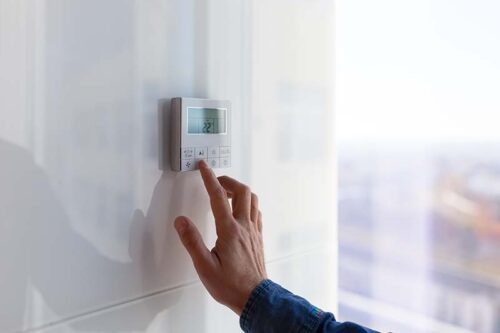If you were ever wondering how efficient your air conditioning and heat pumps were, look no further than SEER Ratings. These ratings serve as a maximum efficiency rating for your HVAC system. But how do you know what a good SEER rating is? And with impending HVAC regulation changes come January 2023, what else do you need to know?
What Are SEER Ratings?
SEER, short for Seasonal Energy Efficiency Ratio, ratings are exactly what the name suggests. SEER ratings ultimately determine the efficiency of your HVAC unit. The higher the rating, the more efficient your system will be.
So how are these ratings determined and measured? Well, given that these ratings are measured seasonally, we have to look at EER ratings. EER ratings are calculated by dividing a system’s cooling output (measured in British Thermal Units [BTU]) by max wattage at 100% output. Thus, SEER Ratings are determined “by dividing the total number of BTUs (British Thermal Units) of heat removed from the air by the total amount of energy required by the air conditioner in watt-hours,” according to Science Direct.
These ratings are important as there lies an intersection between them and the current legislature.
Understanding HVAC Regulations

HVAC regulations beginning in January 2023 will have an impact on SEER ratings.
According to Forbes…
“For air conditioners in the northern part of the U.S., the minimum efficiency will increase to 14 SEER; in the South, the minimum efficiency will increase 15 SEER. The new standards also “require an increase in the heating efficiency of air-source heat pumps—measured by the equipment’s heating seasonal performance factor,” according to the U.S. Energy Information Administration. The minimum HSPF will increase from the current standard of 8.2 to 8.8.”
So why are these changes being implemented? What do high SEER ratings mean for you and your HVAC system?
What Benefits Should I Expect?
Your SEER rating will reflect the benefits that you receive. In fact, some of the benefits you’ll receive are…
- Comfort
- The SEER rating you have will reflect how much comfort your home will receive. Two-stage or variable-speed heating and cooling are core tenets of high SEER-rated systems; lower-rated systems will often be one-stage units.
- Lower energy bills and increased efficiency
- As higher SEER-rated systems are two-stage, these can detect differences in temperature and adjust your system accordingly — thus eliminating the overuse of your system and leading to decreased energy costs.
Donnelly Mechanical’s Commitment to Increased Efficiency
At Donnelly, we take pride in providing our customers with the best in indoor air quality. We do this while also simultaneously providing our clients with up-to-date technology that serves to increase efficiency indoors. To learn more about Donnelly’s offerings, please visit our website and contact us today!